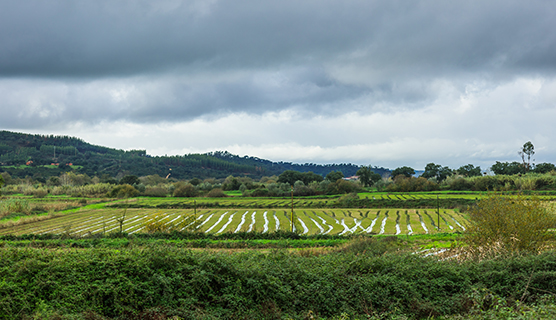
A rice field in Portugal. Climate change adaptation might mean switching from rice agriculture to maize. © Adobe Stock
A new method for climate risk assessment has been developed that improves decision-making for climate change adaptation under uncertainty. The international work, led by researchers from the Finnish Environment Institute (Syke), applied numerical models of climate impacts and large datasets of future changes in climate to quantify the likelihood of critical impacts for crop yields, water resources, human health and ecosystems.
Using the new method, the study team addressed three important aspects for climate change adaptation: what sectors and regions are most sensitive to climate change, how urgent is it to do something about it and what are the most suitable adaptation responses?
How likely are impacts of climate change in a certain area?
Probabilistic projections of climate change have been available for a while for describing uncertainties in future climate. Now these have been used directly to estimate the risks for impacts of climate change and how and when it is best to respond to these. The research team constructed so-called impact response surfaces that show how changes in temperature, rainfall and other driving factors can alter climate impacts. These can be combined with any number of projections of climate corresponding to a given scenario of future greenhouse gas concentrations. Scenarios range from highly fossil-fuelled futures to a carbon-neutral society.
“We are now able to make use of computationally demanding probabilistic projections of climate change to assess the likelihood of future impacts, by accounting for uncertainties in future climate. By quantifying impact risks for any given future scenario of greenhouse gases, we can explore the effectiveness of adaptation responses and potentially improve decision-making across a range of possible futures”, says Senior Research Scientist Stefan Fronzek from Syke who led the study.
Choosing crops to suit rainfall predictions
Case studies were conducted in different parts of Europe. One of the investigated areas is the Vale do Gaio reservoir in southern Portugal, which is used to store water for irrigating crops. Future scenarios of warming and reduced rainfall were shown to lead to increased likelihoods of severe water scarce conditions for the currently dominating rice cultivation in the area. Switching from rice to other crops with lower irrigation demand, such as corn or wheat, allows for an expansion of irrigated area. The study’s analysis framework is useful for exploring the types, choice and timing of adaptation responses.
“Information such as this can help farmers to decide when best to implement different adaptation options”, summarizes Research Professor Timothy Carter from Syke.
Further testing of approach under way
The new approach is currently being tested at regional scale for multiple sectors in Finland in the Adapt-FIRST project funded by the Academy of Finland. It is also being applied to study multiple hazards to Finnish forests in the European Commission-funded EIFFEL project.
Inquiries
- Senior Research Scientist Stefan Fronzek, Finnish Environment Institute, forename.surname@syke.fi, tel. +358295 251 122
- Research Professor Timothy Carter, Finnish Environment Institute, forename.surname@syke.fi, tel. +358295 251 094
- Project homepage: Adapt-FIRST
-
EIFFEL project
Scientific articles
- Fronzek, S., Y. Honda, A. Ito, J.P. Nunes, N. Pirttioja, J. Räisänen, K. Takahashi, E. Terämä, M. Yoshikawa and T.R. Carter (2022). Estimating impact likelihoods from probabilistic projections of climate and socio-economic change using impact response surfaces. Climate Risk Management 38, 100466.
- Carter T.R. and S. Fronzek (2022) A model-based response surface approach for evaluating climate change risks and adaptation urgency. In: Kondrup C. et al. (eds) Climate Adaptation Modelling, p. 67-75. Springer Climate. Springer, Cham.